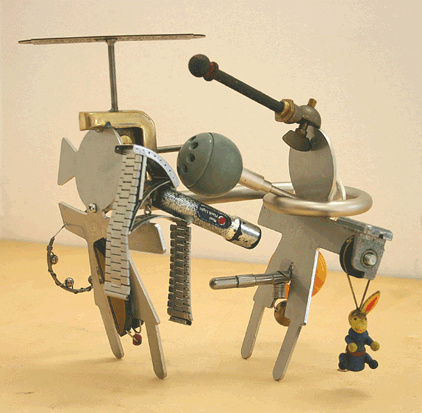je ziet wat, je weet niet (nergens lijkt op het)
6 years ago
This blog is about art from a personal, often philosophical perspective. It is meant as much for me as for you (I hope!). Please allow for some inconsistency, obstinacy, ignorance, incompetence, inaccuracy, blind spots etc on my part. friendly feedback, which may be as critical as you like, is always welcome.
The studio of a contemporary mixed media artist can be quite a messy affair. -Wikipedia

What is touching about Hughes's despair is that he thinks that artists still make things. It's a long time since Hirst actually made an artwork with his own hands.
...
Hirst is quite frank about what he doesn't do. He doesn't paint his triumphantly vacuous spot paintings - the best spot paintings by Damien Hirst are those painted by Rachel Howard. His undeniable genius consists in getting people to buy them. Damien Hirst is a brand, because the art form of the 21st century is marketing. To develop so strong a brand on so conspicuously threadbare a rationale is hugely creative - revolutionary even.
It is perhaps this socially mobile dynamic in the book, that accounts for the fact that Thornton mostly dwells on success and fame in the art world, not its obverse—despite, in fact, the truth that this world is driven not by the stars who made it, but the also rans, in vast numbers, who get smashed trying. Only once do we get a glimpse of this other side of art: in a light and sensitive portrait of a day amongst slacker students at a California art school. The lockjaw of theory and conceptualism on contemporary art is graphically illustrated in the scorn these struggling and mostly hopeless young artists pour on notions that art has anything to do with “beauty” or “affect”. Everyone in the art world today talks this talk today, but it has to be noted how much a role these desperately old fashioned notions still play in motivating the big auction sales—something well observed by Don Thompson. But apart from the students, Thornton has much less to say about the lives and work of the legions of those who are always hopefully (or euphemistically) referred to “emerging” artists, trying to make the leap across the chasm from art school to Turner prize nomination. The book analyses the anxieties of the Turner prize nominees, but these are already “successful” artists; the everyday action in the art system is generally going on well below this, at a more intermediate level, in the mundane actions of dealers and artists to scratch out a career and living against its brute statistics of failure.



